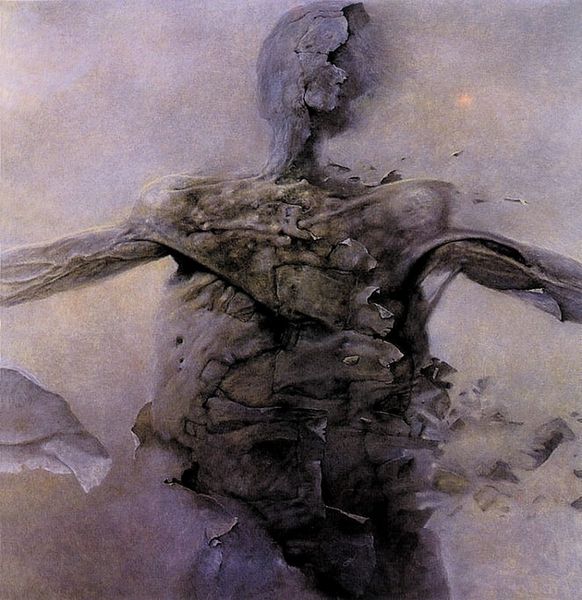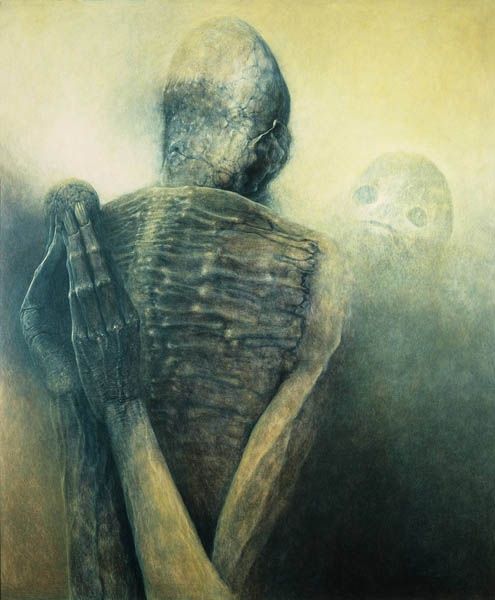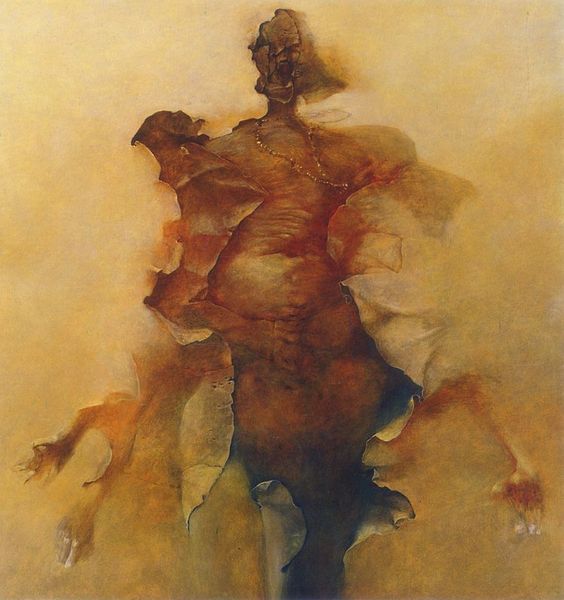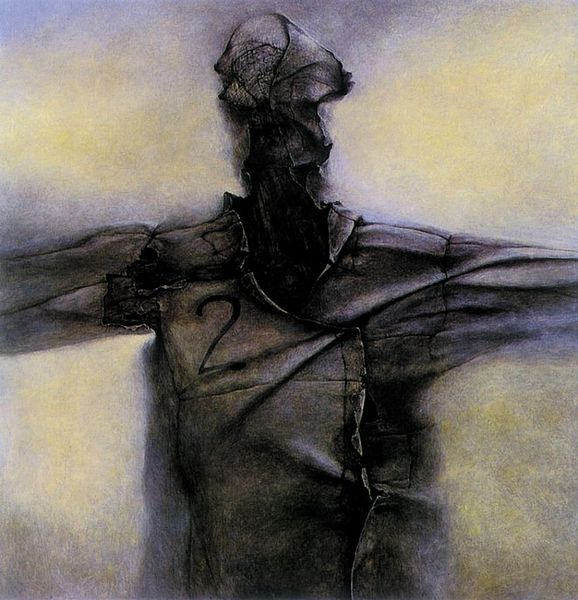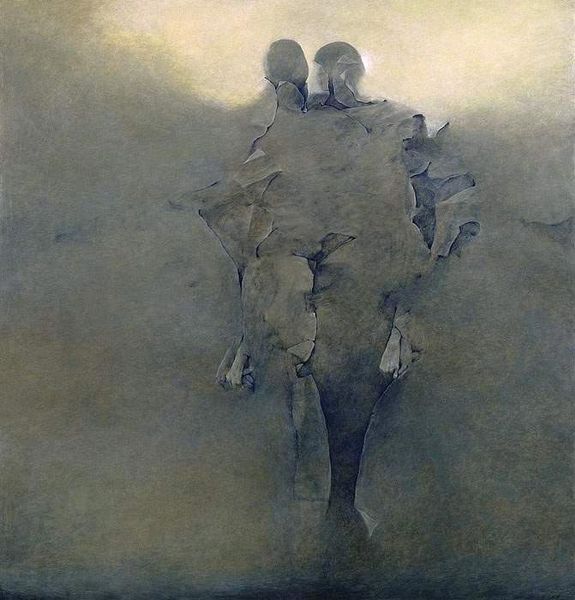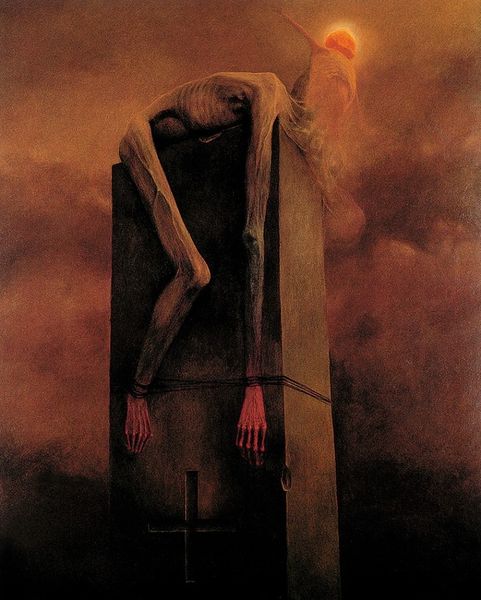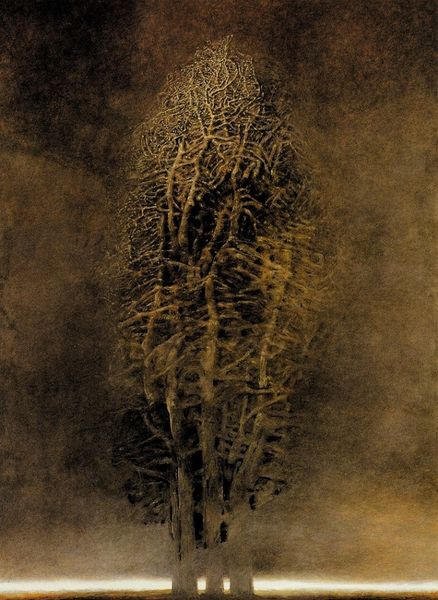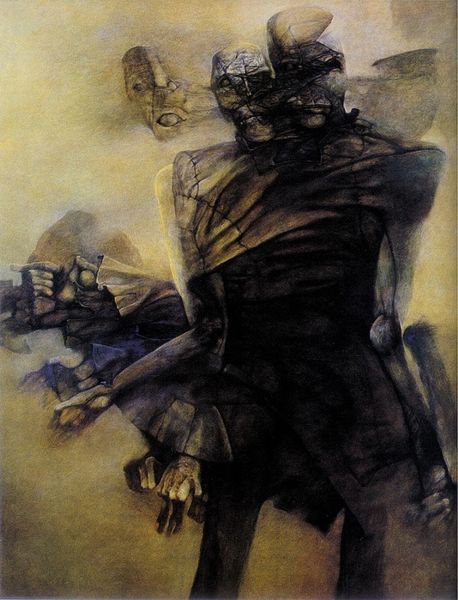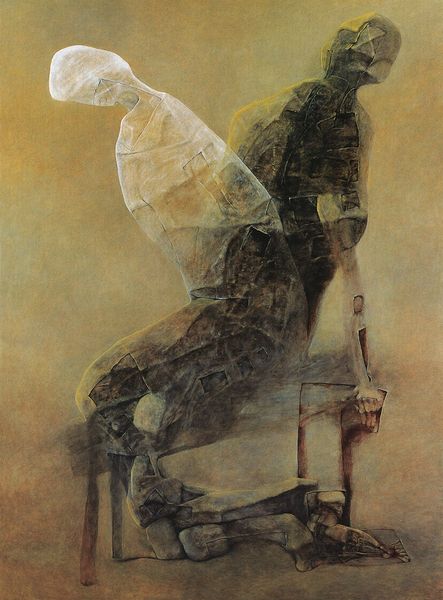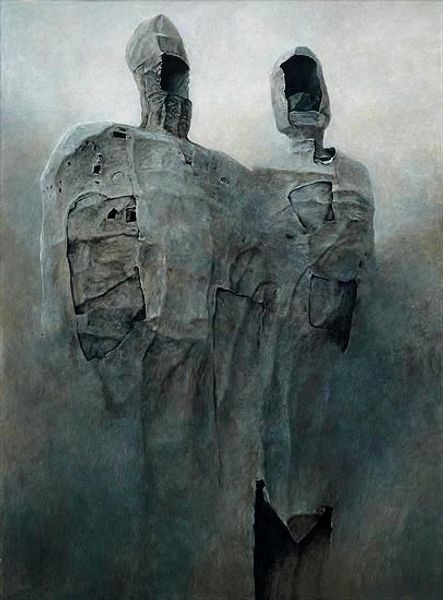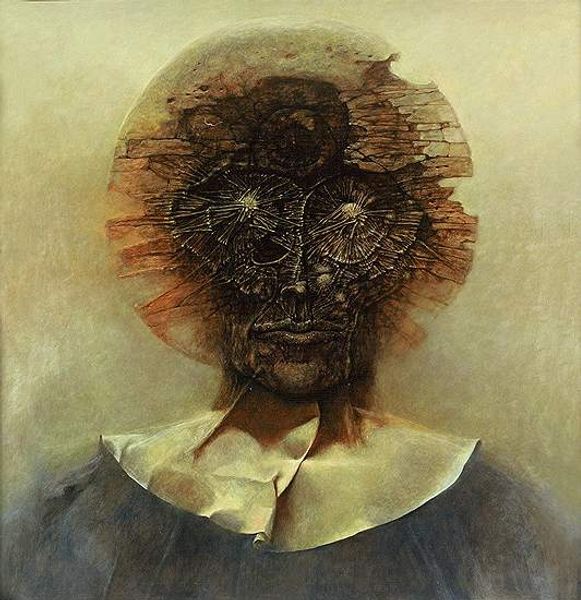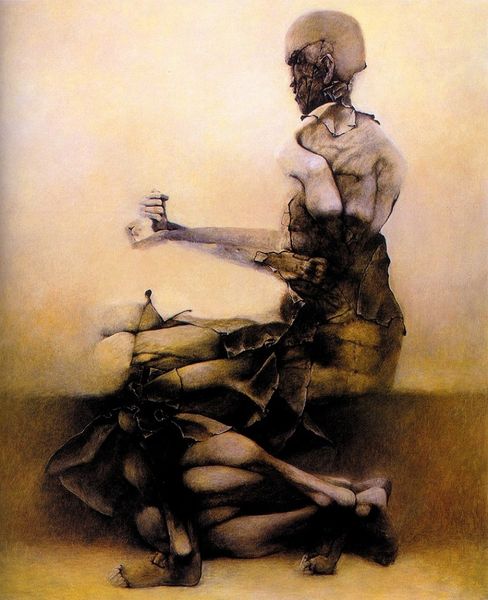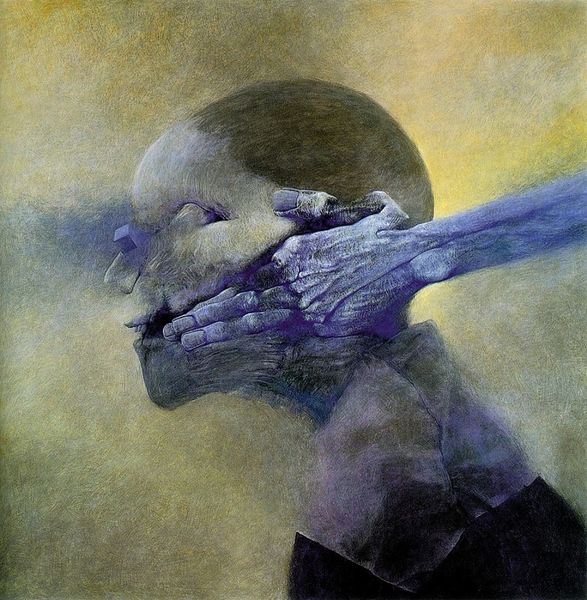
charcoal
#
allegories
#
figuration
#
expressionism
#
matter-painting
#
abstraction
#
charcoal
#
charcoal
Copyright: © The Historical Museum in Sanok (Poland) is the exclusive owner of copyrights of Zdzisław Beksiński's works.
Curator: This arresting, untitled work is by Zdzislaw Beksinski, an artist often associated with surreal and dystopian visions. It’s a charcoal drawing. The exact date is unknown. Editor: It immediately strikes me as something emerging, or perhaps being consumed, by shadow. The figure seems almost geological, like a ruined statue eroded by time. Curator: Beksinski's art frequently engages with themes of death, anxiety, and decay, reflecting the tumultuous socio-political landscape of Eastern Europe during the late 20th century, and specifically, perhaps, anxieties surrounding Poland’s communist regime. Editor: I notice the head is obscured by what seems like bandaging, a suppression of identity and sensory input. The arms, outstretched and vulnerable, offer no resistance. The lack of eyes or a discernible mouth is striking, symbolizing, perhaps, powerlessness. Curator: Indeed, Beksinski's intent was not to offer explicit political statements, but rather to tap into a more universal experience of existential dread. The reception of his work in Poland, though, often linked the themes to the broader feeling of subjugation. The cultural context certainly influences interpretation. Editor: Regardless of whether he explicitly intended a political statement, the imagery itself is inherently potent. The symbolic language speaks of trauma and brokenness. Look at the cracks running through the figure’s torso – suggesting inner fracture. The charcoal medium only amplifies that somber mood, imbuing it all with a raw, almost primitive energy. Curator: The art world and market forces tend to label such artists as ‘outsider art,’ placing them outside mainstream narratives. I find it somewhat reductive because Beksinski engaged actively with art history and clearly had the skill for academic art making. His conscious choice was towards expressions like this. Editor: Right, one can see nods to various traditions – surrealism for the dreamlike, allegorical approach; gothic art in his fascination with death and the grotesque; even a kind of ravaged classicism, here, with that shattered statue effect. A deep cultural reservoir fuels these archetypes. Curator: The absence of any imposed meaning, typical for Beksinski, means it remains powerfully open. The symbolism and iconography we are detecting can thus evolve with time, and with changes in our cultural values. Editor: Ultimately, it’s the universality of the visual language that grips. One does not need to know Beksinski's personal history, or the specific political conditions of his time, to feel the painting’s weight. The symbolic power transcends the artist.
Comments
No comments
Be the first to comment and join the conversation on the ultimate creative platform.
